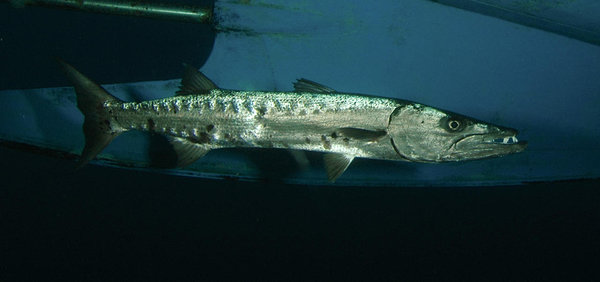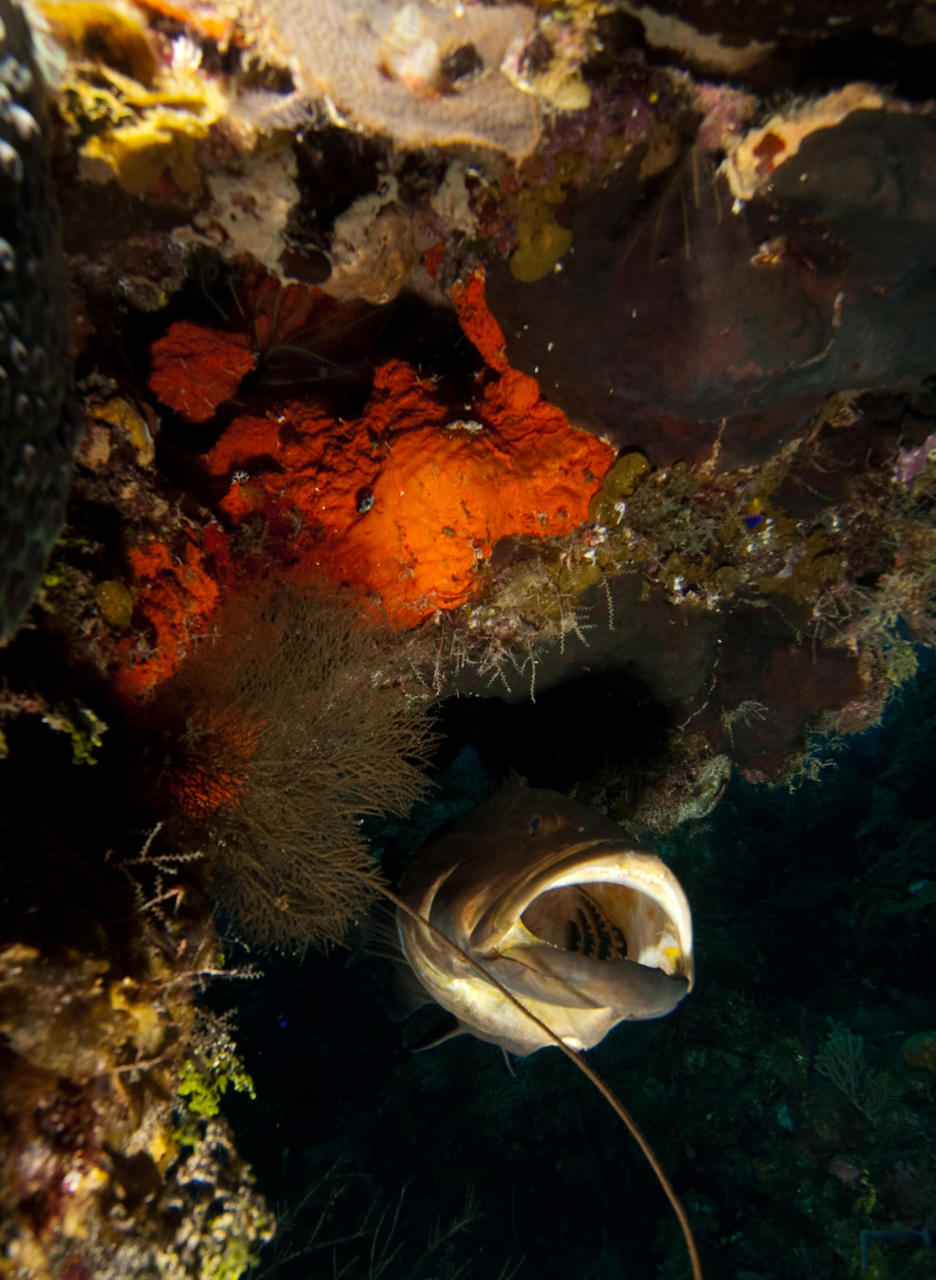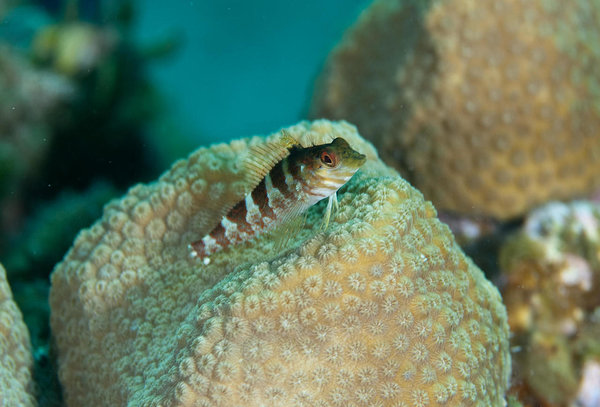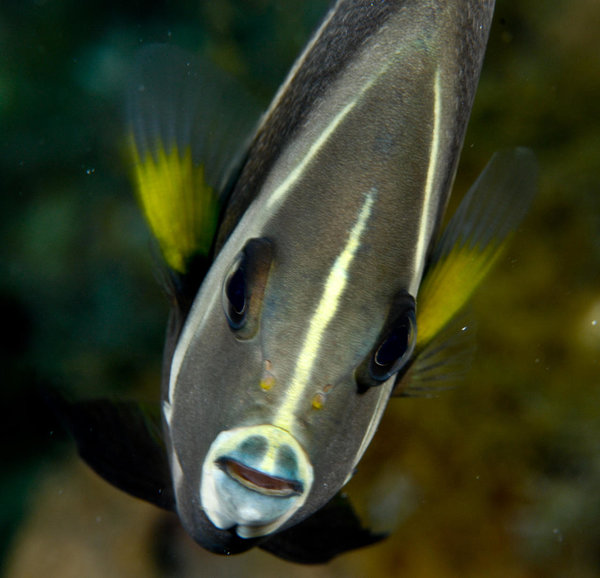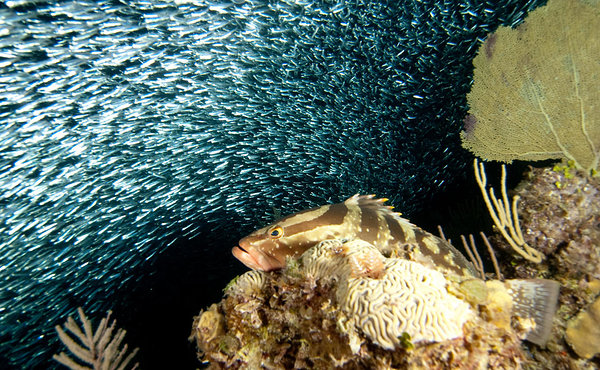Shadow Hunters
Just like humans, fish have different types of feeding patterns, they may be herbivores, omnivores or carnivores. There are 2 types of carnivorous fish – planktivores and piscivores. Planktivores eat tiny transparent animals such as zooplankton, often from open water. Piscivores eat mainly fish. Often you can tell the type of food as fish eats by the position of its mouth.
When some people go diving they have a checklist of animals that they want to see, however it is far more rewarding to observe their behaviour, you get to learn so much more about the ocean if you take a little time to observe. Below is a video I took of a cornetfish shadow hunting. I'll tell you why they do that in a bit.
There are 2 types of planktivores – particulate feeders which ingest 1-2 specks at a time often by shooting their mouths forwards to get their prey and ingesting through suction. Filter feeders swim with open mouths to take in lots of plankton and also water. Gill rakers prevent the particles passing out with the water, there is often a mucus coating over the gill rakers to help trap plankton. They tend to feed higher in the water column and develop sleek bodies and forked tails to evade strikes from predators. On a grandscale whale sharks are an example of filter feeders - it is much easier to see the gills flaring on a fish this size!
Piscivores have large mouths that are either expandable e.g. grouper or lined with sharp teeth e.g. barracudas. This barracuda has really sharp teeth to bite into its prey. Piscivores often hunt as a team to increase their hunting advantage - one can be a distraction whilst the other one attacks the prey.
A bottom feeder has a downturned mouth which is often surrounded by strong blubbery lips or prominent incisors.
Parrotfish have teeth which are fused together to form a beak which makes it easier to scrape the algae from rocks.
Angelfish have rows of tightly packed needlelike teeth to cut through sponges.
Optimal foraging theory is the way in which fish will change their feeding pattern and diet in order to optimise temporarily abundant food supplies. E.g. Blue Tang and Sea Thimble Jellies - when sea thimbles bloom the blue tangs will change eat them to take advantage of the new food supply. All reef fish are opportunistic feeders to some extent, this is made possible by the way in which most fish ingest their food through suction feeding – the jaws rapidly open and the gills flare. Specialist feeders may alter their diets if their preferred food source becomes scarce. E.g. in Grand Cayman in the mid-90’s the Eagle Ray began to decline due to overharvesting of the queen conch, one of their preferred foods, when quotas were established they began to make a comeback.
One of the reasons that most fish are territorial is because it takes less energy to defend an area than it does to search for food. It also provides for the protection of mates, nests and reproductive sites. The fish also know where their hiding places are incase of predators. When they have a territory most fish remain within its boundaries, some will commute to and from alternate sleeping locations/ spawning sites. Even after an individual acquires a greater territory its food consumption rarely increases. These territories can be established by individuals e.g. damselfish or by harems e.g. parrotfish, wrasse (Harems usually have a single dominant male and several females, all will have a go at defense duty – this can be seen by lateral fin displays, chases, sounds, parallel swimming or nips).
1/2 to 2/3 of fish forage by day because vision is key to their survival, as is staying close to their hiding holes. Only streamlined fish e.g. brown chromis and creole fish go higher above the reef where the richest plankton streams are. Sand-dwelling planktivores e.g. yellow headed jawfish grab passing specks just above the safety of their burrows. Crustacean eating fish e.g. wrasse and goatfish root in the sand only a short distance from the reef edge. Cleanerfish, juvenlle wrasse and gobies pick parasitic crustaceans from client at cleaning stations therefore this gains them a lot of immunity from predators.
Fish which tend to forage further from
their home tend to have adaptations to give them greater protection, e.g. triggerfish
and filefish have deep bodies, tough skin and a foredorsal spine.
Gorgonian sea fans avoid predation by giving off pungent odours. Sponges are covered with a tough fibrous exterior and filled with indigestible mineralised supports and repellent chemicals, therefore it is a very distasteful food. Only 11 species of fish regularly eat them. Generally they are fish which have evolved in recent geological time when possible there has been greater competition for food on the reef, therefore they eat sponges which many others do not.
Some species optimise their feeding by hunting with others. The rate of strike increase for both parties, when hunting bar jacks often change colour from silver to a more bronzed/ black hue. Some predators accompany moray eels because the eels can invade the reef and push fish out for others which are lying in wait to either eat it or push it back inside for the eel.
Most carnivorous fish love eggs because they are filled with fat. If a sergeant majors’ nest is full then packs of bluehead wrasse will often test the male’s guarding abilities and try to overwhelm his defences. If have pelagic spawners then many fish such as yellow tail snappers will wait nearby and then dart through the clouds of gametes.
Different fish have evolved into different shapes to help prevent predation – angelfish are flat for protection, trigger and filefish have a defensive foredorsal spine, burrfish inflate body with water, redband parrotfish have camouflage, razorfish escape into the sand.
Predation – piscovores form 2 different types of predators 1) roving predators e.g. barracuda, jacks, tarpon 2) lie-in wait predators e.g. batfish, lizardfish, scorpionfish. Predators capture rates increase when take advantage of abnormal situations e.g. during the twilight hours. Jacks often hunt in groups to increase success rates, will circle schools of grunts and then attempt to splinter the group by slashing through them thus making it easier to pick off individuals. Trumpetfish are good hunters because they have thin bodies which cast very little shadow, they disguise their shape by aligning with gorgonians and sponges. Frogfish entice small fish with a dangling line (lure) attached to the end of a modified form of spine. Attacks on silversides are more successful at dawn or dusk because the silversides no longer glint therefore it is easier to see them.
Herbivores comprise about 25% of all fish, eating only plants and therefore transferring energy higher up the food chain. Algae provides few nutrients therefore herbivores must harvest and process large amounts to meet demand. If we did not have herbivores then the reef would not exist in their present form, this is because the competitively superior algae would quickly smother existing corals and blanket the reef rock. There would be nowhere for coral larvae to settle and establish new colonies.
